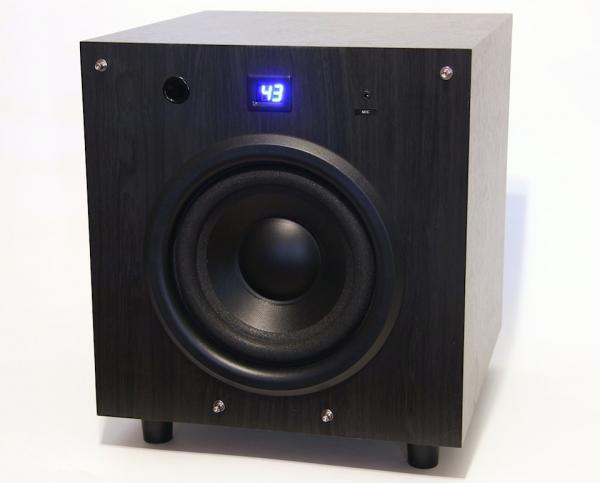Review: Velodyne EQ-Max 8 Subwoofer

Some home theater enthusiasts see automatic equalization as a sonic savior. They believe it guarantees great sound. But it doesn’t.
Auto EQ technology automatically optimizes your sound system by measuring, then compensating for, the acoustics of your room and the performance of your speakers. It runs test tones through your system, measures the levels of the tones through a microphone, then analyzes the results and creates EQ settings that in theory make your sound perfect. If the auto EQ works well, you can optimize your system’s sound in a minute or two with the push of one button.
There are all sorts of auto EQ systems out there. Some are powerful, allowing the creation of multiple filters to correct almost any conceivable room acoustics problem. Some are simple, with a small number of filters and a limited range of correction. Some let you average the results from multiple seating positions in your room. Some let you measure from just one position. Some are created by engineers with decades of experience and hard-won wisdom. Some appear to have been created by DSP code-slingers who don’t know much about audio. Some make the sound a lot better. Some make it worse.
Thus, when I heard the news that Velodyne was incorporating auto EQ into a new line of affordable subwoofers, I was excited but wary. Would the new EQ-Max line be like getting one of Velodyne’s beyond-awesome Digital Drive Plus subwoofers at a bargain price? Or would it be yet another auto EQ system that accomplishes little?
As Velodyne’s Chris Hagen explained to me, the EQ-Max line is in essence a stripped-down version of the auto EQ function in Digital Drive Plus. It employs 1/3-octave-spaced infinite impulse response (IIR) filters at 40, 50, 63, 80, and 100 Hz. There are no filters below 40 Hz because the box resonance of the EQ-Max subs runs between 32 and 38 Hz, depending on the model, and attempting to apply correction at frequencies so close to the box tuning could cause distortion or damage the driver. According to Hagen, the correction range of the filters is limited to ±3 dB because more extreme correction could cause excessive phase shift.
I was eager to snag a sample of the biggest sub in the line, the $879 EQ-Max 15, but the Sound+Vision editors decided maybe we’d hold off on that one and put it in some sort of subwoofer mega-review at some future date. But when I suggested getting in the the $459 EQ-Max 8, just to see how good Velodyne’s auto EQ implementation was, they let me off my leash.
With an 8-inch driver and a 180-watt RMS amplifier, the EQ-Max 8 ain’t a powerhouse, but it is the first sub-$500 sub I’ve seen with auto EQ. It’s also probably the snazziest sub-$500 sub I’ve seen, period. Besides auto EQ and a tiny calibration mic, it comes with a remote control, four EQ presets, a front-panel numeric LED display, and line- and speaker-level inputs and outputs.
Setup
I connected the EQ-Max 8’s line-level LFE input to the subwoofer output of my Denon A/V receiver. I used it with a set of Sunfire Cinema Ribbon speakers: three CRM-2s in the front, plus two CRM-2BIP speakers in the back for surround. I chose a crossover point of 100 Hz, which works well with the Cinema Ribbons.
As with all the subwoofers I test, I placed the EQ-Max 8 in my room’s “subwoofer sweet spot,” a place along the wall under the screen, about a third of the way from the right side wall. This is where a single subwoofer usually sounds best in my room from my usual seating position. However, I also tried it in a couple of other locations: in the left front corner, tested from my usual listening seat; and in the sweet spot but with my listening chair moved to a spot where I’d measured a huge response hump at 47 Hz. I chose the other positions because they’d present a greater challenge for the auto EQ.
Running auto EQ is really simple. Plug the included mike into the jack on the front of the sub. Hold the mic near your head. Now hold down the EQ button on the remote down for 3 seconds. The sub automatically plays a series of test tones and adjusts itself. The whole process takes about 30 seconds.
- Log in or register to post comments



































































